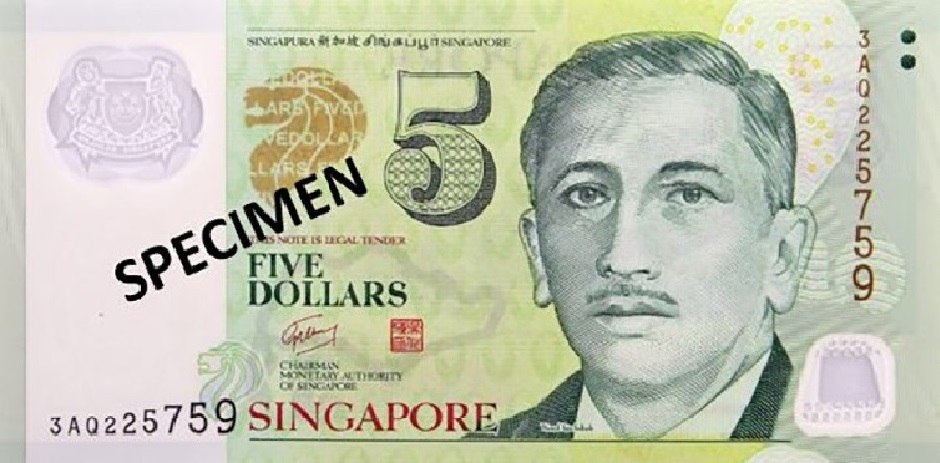5 Facts You Didn’t Know About Our 5-Dollar Tree

Take a look at our 5-dollar note. Our first president, Yusof bin Ishak, looks great. Now turn it around, and you should see a drawing of a tree.
Source: CSK Landscape Services (S) Pte Ltd
Our very own money tree.
This iconic Tembusu (Cyrtophyllum fragrans), with its low outstretched branch, sits on Lawn E of the Singapore Botanic Gardens. It was chosen as the mascot for our garden city when the portrait series banknotes were first introduced in 1999, and we have carried its picture in our wallets ever since.
Singapore just celebrated her 55th birthday, so here are 5 facts about our 5-dollar tree.
1. It is older than Singapore
How old is it? Nobody knows for sure, not even arborists. But, we know it existed before the Botanic Gardens were laid out in 1859, which makes it at least 161 years old this year.
Source: CSK Landscape Services (S) Pte Ltd
The tree’s infoboard in the Gardens.
Singapore has been built, demolished, rebuilt, and even reclaimed from the sea. It is rare to find such a veteran tree anywhere on our urbanized island. Even when Singapore’s greening campaign began in 1963, Tembusus were not commonly planted.
Its wood is hard and durable, but slow-growing, which is not a desirable quality for quick city greening. The 5-dollar tree must have taken a long time to reach its girth of over 7.8 metres.
The good news is that more recent tree planting efforts are beginning to focus on native species, and we may see more of its kind in the future.
2. It has a large cavity, but that’s okay
Rain or shine, a tree has to weather storms, and stand its ground. The 5-dollar tree would have experienced quite a few injuries throughout its long life. It is common for veteran trees to have large cavities, yet survive and even flourish.
Source: CSK Landscape Services (S) Pte Ltd
Doesn’t bother the tree at all.
Think of all the times a person is injured in their life. Given time, most of those injuries would heal. A tree on the other hand, does not heal its wounds. Its strategy is to compartmentalize damaged regions from healthy ones.
Source: CSK Landscape Services (S) Pte Ltd
You can even see through its trunk from this angle.
A tree may cover up damaged areas with new wound wood, but the damage will still be visible if its cross-section is ever examined. The important thing is to support the tree as it compartmentalizes its wounds, and try to help prevent new ones from forming.
3. The Singapore Botanic Gardens tries its best to help
Compare this older photograph with one taken this year.
Source: Ghetto Singapore
Older photograph.
Source: CSK Landscape Services (S) Pte Ltd
Newer photograph.
You may have noticed some differences other than the photograph’s angle. The root zone has been increased, mulch laid down, and fences installed to reduce foot traffic.
Back when it was still accessible, visitors to the Gardens loved to approach it, taking photos while climbing on its low branch. This has the unfortunate side effects of compacting the soil, making it hard for its roots to survive, and increasing the strain on its already structurally awkward branch.
Source: The Straits Times
Great for pictures, stresses the tree.
On closer examination, you may also notice the static wooden props for its low branch, used since 1992, have been upgraded.
Source: CSK Landscape Services (S) Pte Ltd
Strutting some new struts.
These dynamic props were designed by engineers from Singapore Technologies Kinetics (ST Kinetics). Unlike the old wooden props, the new dynamic props can be adjusted, so that the tree does not become reliant on them, and it will continue to grow new wood to support the weight of the branch.
Speaking of which, the Tembusu has an easy way of telling us where it is growing new wood.
4. The bark tells a story
The Tembusu’s bark has been described as “deeply fissured”.
Source: CSK Landscape Services (S) Pte Ltd
Real Tembusus have fissures.
Thick and deep fissures generally indicate a layer of rapidly dividing cells underneath, the Tembusu is probably putting out a lot of new wood in such an area. On the other hand, thin and shallow fissures generally indicate the cell division beneath that area of bark has slowed. The Tembusu could be using its resources elsewhere.
The bark of the 5-dollar tree would be a useful, non-invasive way, to gauge if it is growing new wood where it is needed, such as in areas supporting its low, outstretched branch.
5. It is a Heritage Tree
This should come as no surprise, we have already seen it on the tree’s infoboard. The Heritage Tree scheme aims to protect our veteran trees in the face of Singapore’s rapid urbanization.
Source: CSK Landscape Services (S) Pte Ltd
Hi! It’s me again, the infoboard.
You may be wondering why HSBC is on the infoboard. That is because when the Heritage Tree Scheme was introduced in 2001, they established the Heritage Tree Fund kickstart it.
According to NParks, the programme today hosts 258 trees, includes lightning protection installation, interpretive signage, and a nomination scheme. You can find the full description of the scheme here (https://www.nparks.gov.sg/gardens-parks-and-nature/heritage-trees). It even contains a nomination form for new heritage trees.
If you need help with any tree-related matters, Heritage or otherwise, we can be contacted at, admin@csklandscape.com.
